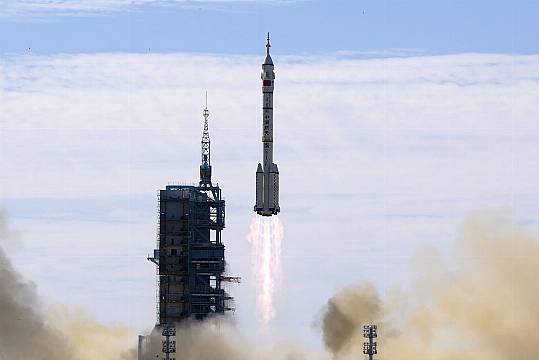China has recommitted itself to completing its orbiting space station by the end of the year and said it is planning more than 40 launches in 2022, putting it roughly level with the United States.
Among the launches will be two Shenzhou crewed missions, two Tianzhou cargo spacecraft and the station’s additional two modules, the official Xinhua News Agency reported, citing a recent announcement by the China Aerospace Science and Technology Corporation known as CASC.
Named Mengtian and Wentian, the science modules will join the Tianhe core module that is currently home to a three-person crew.
The launch schedule shows how China’s traditionally cautious programme is increasing its missions as it seeks to take a leading role in space exploration.
Like a latch made in heaven, @NASAWebb’s secondary mirror is now fully deployed and locked!
The team remains focused as they work toward the final major milestone this week – deployment of the iconic honeycomb-shaped mirror. Details: https://t.co/xSRXwCNd8V
#UnfoldTheUniverse pic.twitter.com/dAkMNApb2FAdvertisement— NASA (@NASA) January 5, 2022
The US expects around the same number of launches this year, after the pace slowed in 2021 because of the Covid-19 pandemic. Supply chains for crucial items such as computer chips were disrupted and liquid oxygen used as rocket fuel had to be diverted to hospitals to save patients.
Among the most anticipated is the launch expected around March of the Space Launch System – a rocket slated for future lunar missions.
China’s military-run space programme was barred from the International Space Station, mainly due to US objections.
Working largely on its own, China has pushed ahead with its Tiangong space station programme, building and then abandoning two experimental stations before embarking on the latest iteration.
The current six-month mission, Shenzhou-13, by the crew aboard Tianhe is China’s longest since it first put a human in space in 2003, becoming only the third country to do so after Russia and the US.
The crew has conducted a pair of spacewalks – including the first by a Chinese female astronaut – and carried out tests alongside the station’s robotic service arm, which on Thursday successfully undocked then redocked the Tianzhou-2 cargo spacecraft for the first time.







